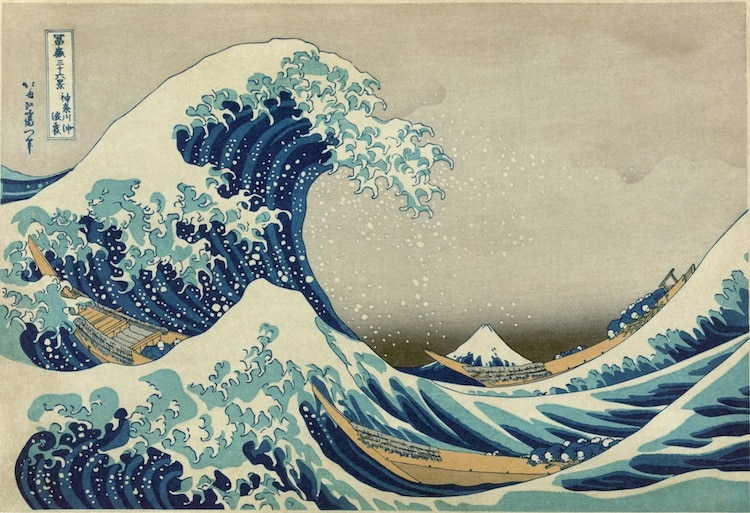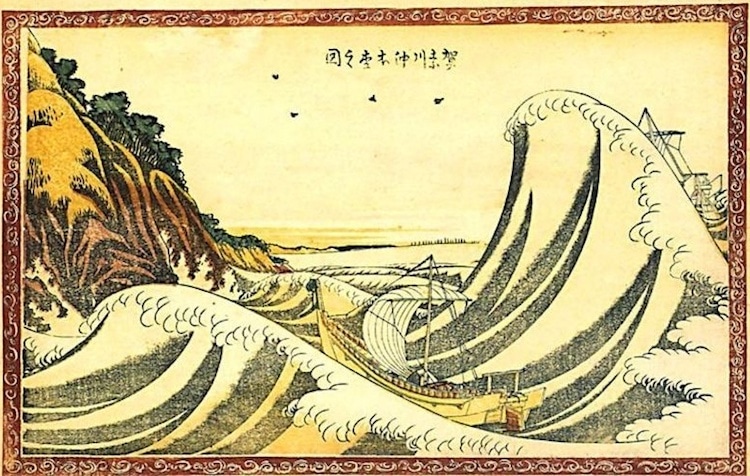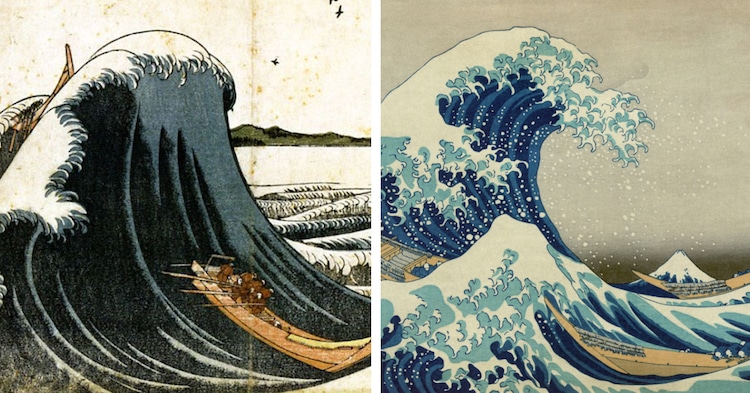The History of ‘The Great Wave’: Hokusai’s Most Famous Woodblock Print

Hokusai’s The Great Wave off Kanagawa is one of the world’s most celebrated works of art. A prime example of the ukiyo-e practice, this Japanese print has inspired artists and viewers for nearly 200 years. While The Great Wave is instantly recognizable, many may not know of its history, including its surprising evolution, role within a series, and even its lasting legacy.
The Great Wave off Kanagawa is a yoko-e (landscape-oriented) woodblock print created by Japanese artist Katsushika Hokusai during the Edo period. It is the first piece in Thirty-six Views of Mount Fuji, a series of ukiyo-e prints showing Japan’s tallest peak from different perspectives.
In this piece, Mount Fuji is seen from the sea and framed by a large, cresting wave. This swell dominates the canvas, dwarfing both the mountain and a trio of boats and inspiring the title of The Great Wave.
Hokusai’s Precursors
While this print is Hokusai’s most famous depiction of a wave, it is not the only time he experimented with the motif. In fact, he created three other similarly themed works of art throughout this lifetime, allowing viewers to visually trace the evolution of The Great Wave.
Hokusai started employing waves as subject matter when he was 33 years old. In 1797, he created Springtime in Enoshima, a woodblock print from his The Threads of the Willow series.

While Mount Fuji and a stylized wave dominate the lefthand side of the composition, the scene also prominently features a family standing on the beach. The presence of these figures is unique to Hokusai’s wave studies, as they typically focus on the sea and its surrounding landscape—not on people.
In 1803, Hokusai again experimented with the cresting wave motif. In View of Honmoku off Kanagawa, a large wave towers over a ship as it sails past its trough. Like the wave featured in Springtime in Enoshima, this subject is stylized. Unlike its predecessor, however, this second wave is much more simplified, larger in scale, and traveling from right to left.
Two years after he created View of Honmoku off Kanagawa, Hokusai completed Fast Cargo Boat Battling The Waves. Stylistically, this piece is very similar to the preceding piece. What sets is apart, however, is the composition, as Hokusai returned the cresting wave to the left side of the scene.
Unsurprisingly, this penultimate portrayal most closely resembles the famous and final Great Wave, though the former lacks the intricate white caps and vivid color present in the latter. On top of these stylistic differences, The Great Wave also features an important change in subject matter: the addition of Mount Fuji, its intended focal point.

Thirty-six Views of Mount Fuji
Around 1830, 70-year-old Hokusai produced Thirty-six Views of Mount Fuji. In this series, he offers glimpses of Mount Fuji from different vantage points and during various times of the year. The prints in this series are renowned for their rich hues—particularly, their blue tones—which Hokusai achieved through a complex, multi-block printmaking process.
Comments
Post a Comment